Evanston, IL Pollen and Allergy Report for Summer 2023
Pollen Allergy Trends in Evanston, IL
When is pollen lowest in Evanston, IL?

March
Lowest month total PPM
Avg. PPM
When is pollen highest in Evanston, IL?

May
Highest month total PPM
Avg. PPM
How does pollen in Evanston, IL compare to Illinois?
Evanston has a lower average PPM than the state of Illinois.
Evanston yearly avg PPM:
Illinois yearly avg PPM:
How does pollen in Evanston, IL compare to the USA?
Evanston has a higher average PPM than the USA.
Evanston yearly avg PPM:
USA yearly avg PPM:
Is pollen worse this year in Evanston, IL?
Spring 2023 was worse than spring 2022.
Spring 2023 PPM:
Spring 2022 PPM:
Average PPM in Evanston, IL
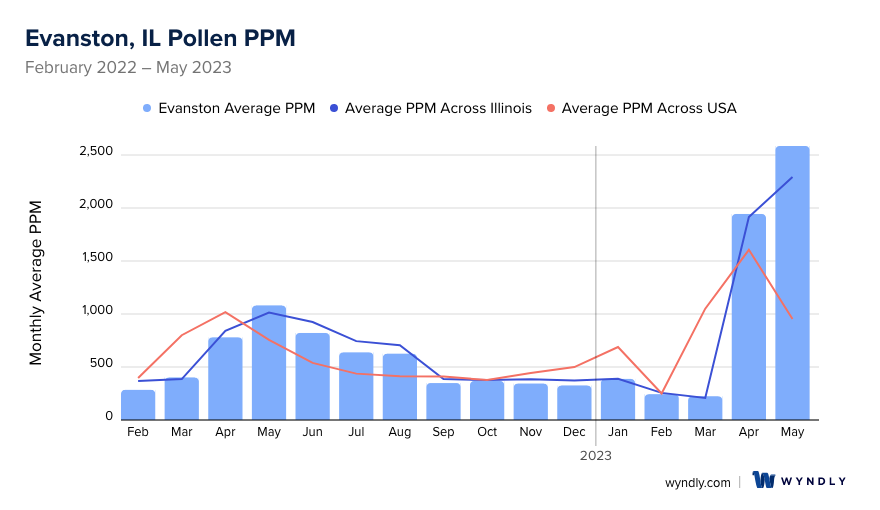
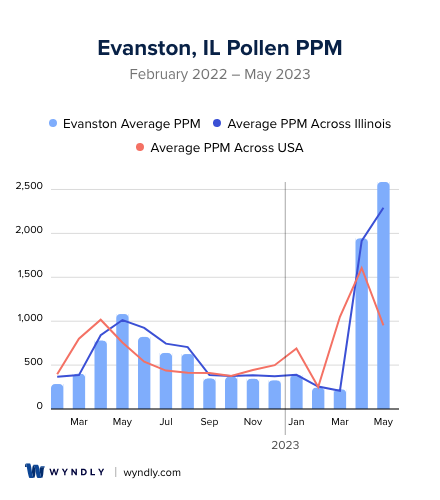
Evanston, IL Pollen and Allergy Breakdown by Month
Grass
When is grass pollen highest in Evanston, IL?
May has the highest grass pollen in Evanston, IL with an average PPM of
When is grass pollen lowest in Evanston, IL?
October has the lowest grass pollen in Evanston, IL with an average PPM of
Tree
When is tree pollen highest in Evanston, IL?
May has the highest tree pollen in Evanston, IL with an average PPM of
When is tree pollen lowest in Evanston, IL?
October has the lowest tree pollen in Evanston, IL with an average PPM of
Weed
When is weed pollen highest in Evanston, IL?
April has the highest weed pollen in Evanston, IL with an average PPM of
When is weed pollen lowest in Evanston, IL?
February has the lowest weed pollen in Evanston, IL with an average PPM of
Evanston, IL Pollen Monthly Breakdown by Pollen Type
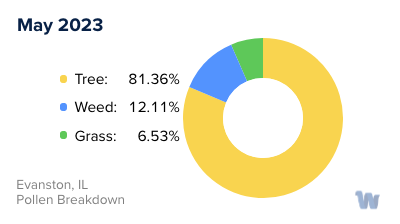
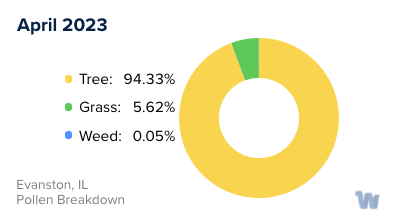
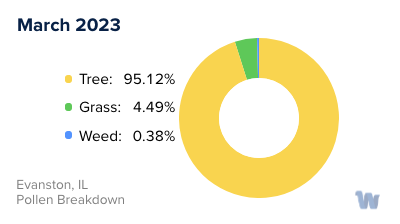
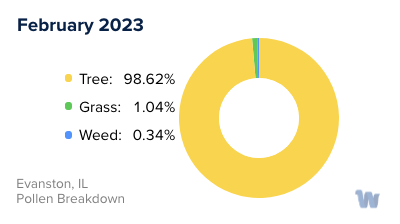
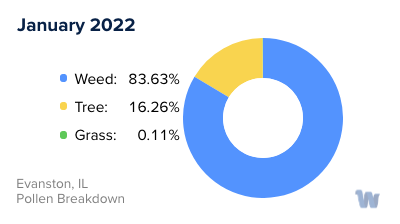
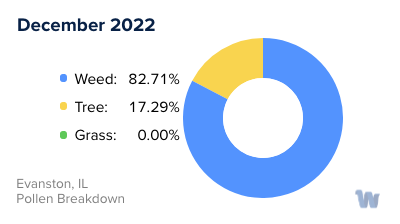
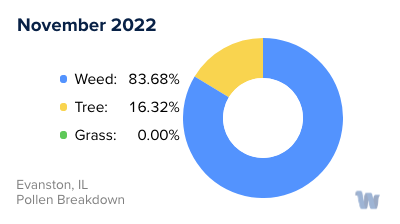
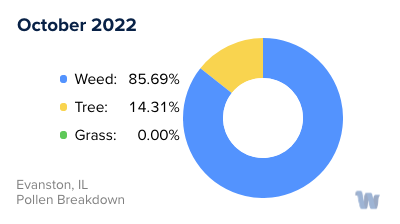
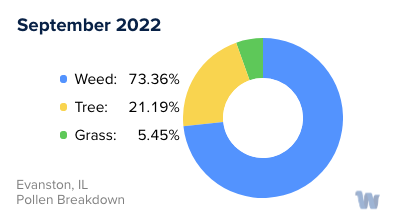
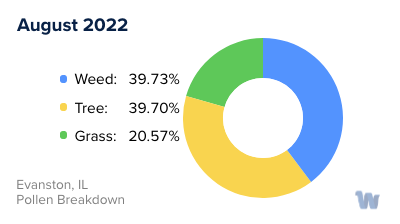
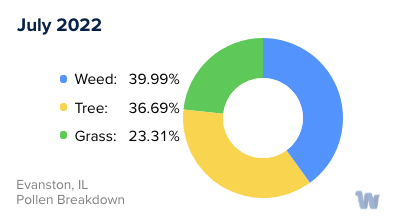
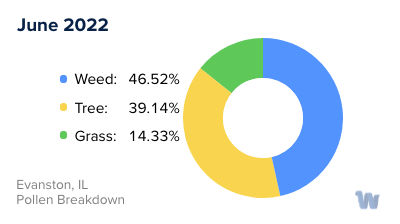
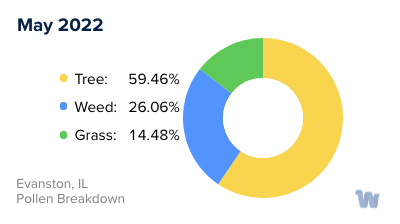

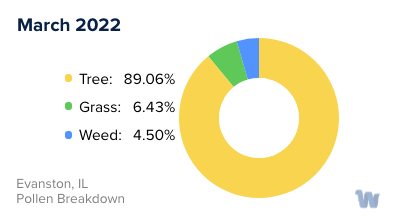
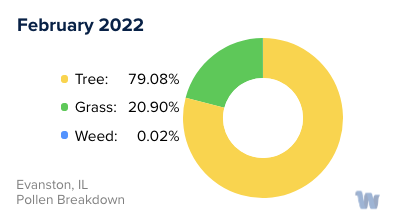
Pollen and Hay Fever in Evanston, IL
When it comes to pollen allergies, Evanston, Illinois, experiences a typical seasonal cycle. The allergy season begins around March, as the arrival of spring triggers the release of tree pollen into the air. Key culprits include oak, hickory, maple, ash, willow, privet, mulberry, and walnut trees, making spring a challenging time for individuals sensitive to these types of pollen.
As summer rolls in around mid-May, the primary allergens shift from tree pollen to grass pollen. For residents of Evanston, various grasses such as ryegrass, Bermuda, bent, timothy, brome, sweet vernal, fescue, orchard, and prairie grasses can cause allergic reactions. The grass pollen season typically tapers off by August, providing some respite for those affected.
However, the relief is temporary, as the arrival of fall in August brings another wave of allergens. This time, weed pollen takes center stage. Common triggers include ragweed, wormwood, sagebrush, orache, pigweed, and amaranth. The weed pollen season continues until the first hard freeze of winter, marking the end of the allergy season.
Winter in Evanston is typically free of pollen allergies thanks to the very cold temperatures. However, it's essential to note that while outdoor allergens might be absent, indoor allergens can still cause issues.
In summary, Evanston, like many other parts of Illinois, experiences a cycle of different allergens throughout the year. Tree pollen is prevalent in the spring, grass pollen in the summer, and weed pollen in the fall. Each of these seasons brings its unique challenges to those susceptible to these allergens.

